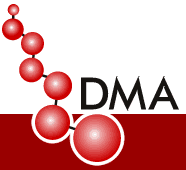The Accountable Leader - Content
Part I
1 Accountable for success
- Held to account - what does it mean?
- Accountability, organization design and effective leadership
- Accountability: what does it mean?
- Why is accountability important?
- The link to authority
- Teams and shared accountability
- What is management accountability?
- Personal fulfilment on the front line
- The Accountable Leader Chapter I: Key points
2 Organizing for accountability
- Hierarchy: the response to increasing complexity
- The importance of a sound organizational platform
- What makes for an accountable organization in which leaders are held to account?
- The importance of organizations being ' in flow'
- The Accountable Leader Chapter 2: Key points
3 Leaders and leadership development
- The Napoleon syndrome
- Leadership versus management: a barren dichotomy
- A key distinction
- What is meant by leadership?
- The issue of talent
- Leadership pipeline -what pipeline?
- Leadership development in the organization
- Job evaluation: status, grades and ranks
- Self-actualization
- The Accountable Leader Chapter 3: Key points
4 Holding leaders to account: leadership by design
- The DMA Solution Set
- What is Decision Making Accountability?
- The importance of conceptual integration
- The link to business strategy
- Management layers and work levels
- The Seven Elements of DMA
- The Accountable Leader Chapter 4: Key points
Part 2
5 Held to account at the front line
- On the level
- At the sharp end
- The Seven Elements at the front line
- Challenges at the from line
- The supervisory role in the first level of accountability
- Support roles and their link to authority
- The supervisory challenge at the front line: a 'spanner in the works'?
- Spans of control
- The well-organized customer service front line
- Warning signs: typical issues resulting from multiple tiers of frontline supervision
Possible next steps
- The Accountable Leader Chapter 5: Key points
6 Managing the front line
- A rule of thumb: organize for value from the front line
- The Seven Elements at the second level of accountability
- Implications for management
- The problem with professionals
- Attention: spans
- Key steps to define the optimum span of control
- The span of control questions
- The advantages and shortcomings of narrow and wide spans
- Layers: redressing the balance
- The Accountable Leader Chapter 6: Key points
7. Managing the managers
- The essence of Level 3 accountability
- Issues at Level 3
- The business unit
- Automation
- Organization design problems at Level 3
- How it works in practice: a Work Level 3 case study
- DweII - time at Level 3
- The Accountable Leader Chapter 7: Key points
8 Managing on a global stage
- Strategic accountability
- When is a regional headquarters juststified?
- What does the CHQ do?
- Reporting links
- TheAccountable Leader Chapter 8: Key points
Part 3
9 Organizational design accountability and leadership in practice
- Leadership development schemes and why they fail
- Organization design is critical to leadership development
- Operational and strategic work: identifying the dividing line
- Performance is no guarantee of promotion
- The importance of boundary moves
- Faulty organization design masks the identification of talent
- The way forward
- The Accountable Leader Chapter 9: Key points
10 Leadership development schemes: how can they succeed?
- The challenge
- The key steps to identifying and developing leaders
- Pulling the threads together
- The Accountable Leader Chapter 10: Key points
11 Tracking a successful leader
- The era of the inclusive leader
- A Level 8 career track
- Advising leaders at Levels 6 and above
- The Accountable Leader Chapter 11: Key points
12 The accountable leader: 20 key ideas
- 20 key ideas in this book
